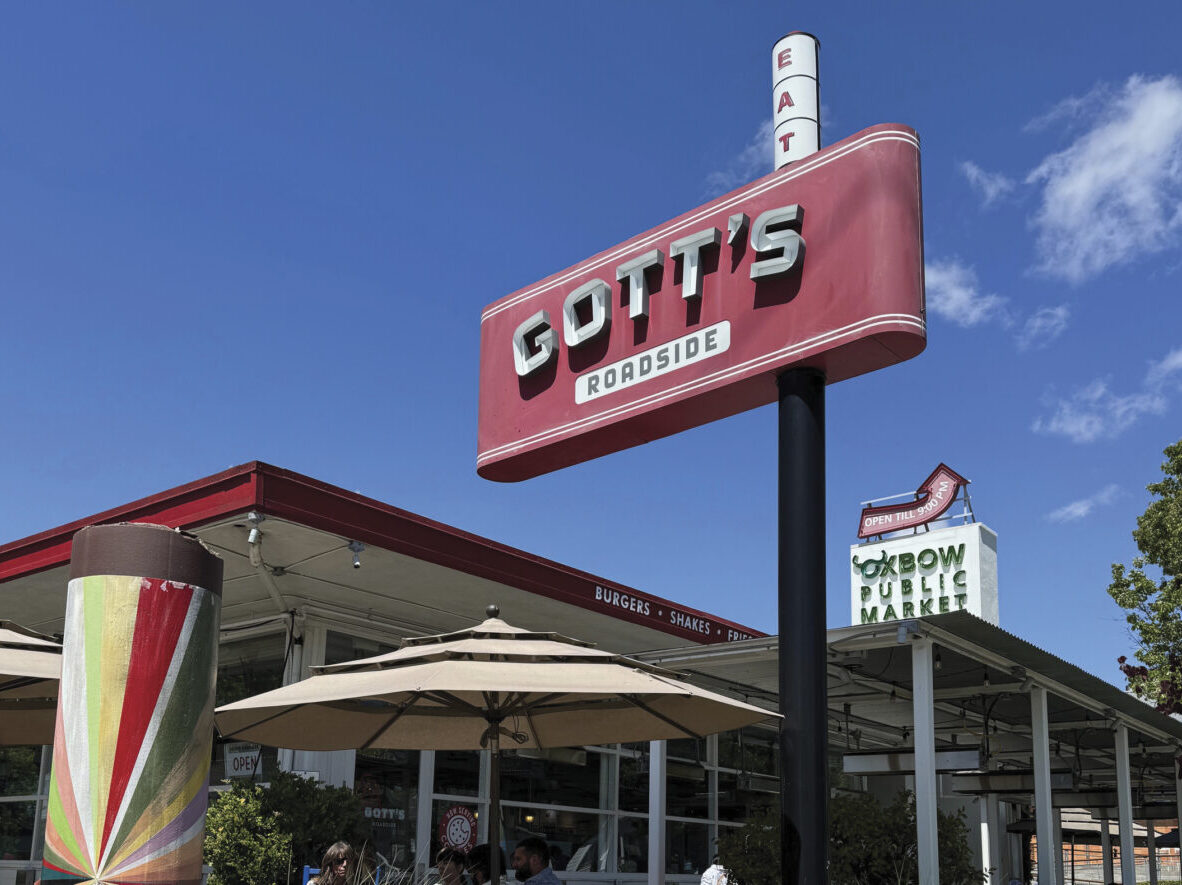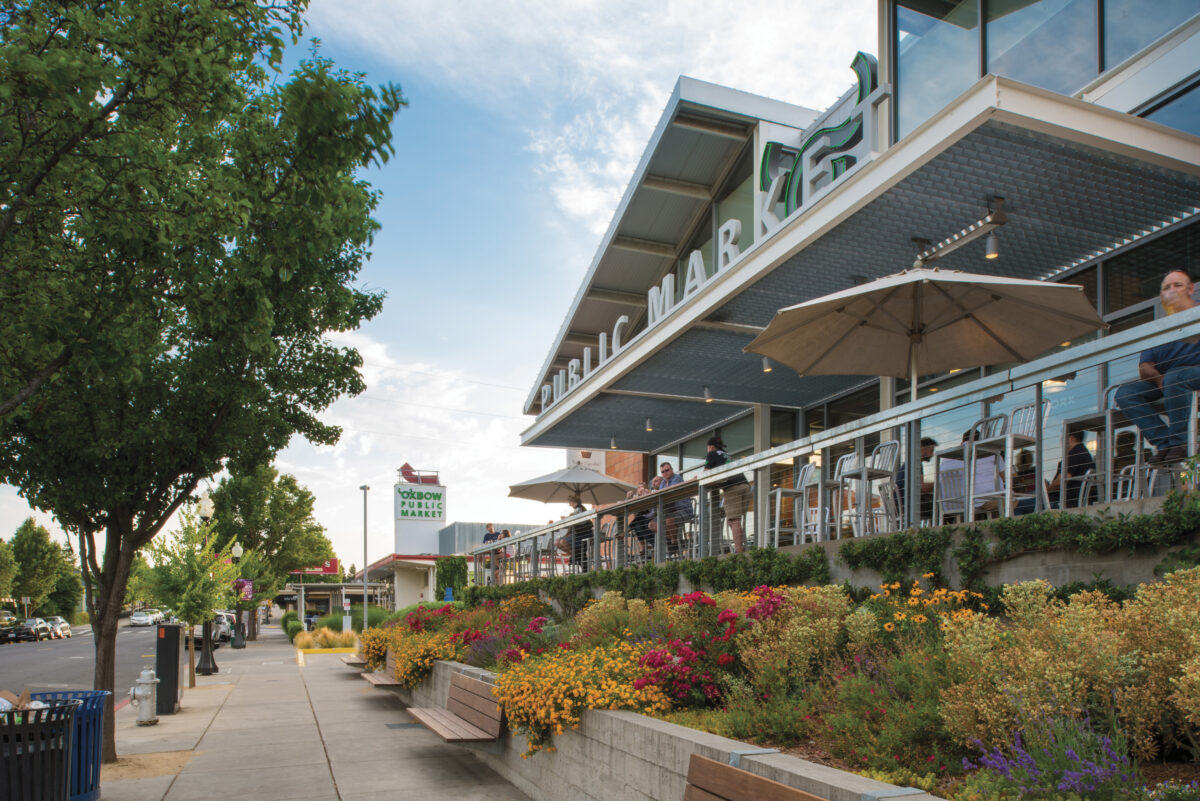home featured + Things to do
Coming Home to Alta Heights
One of Napa’s Most Coveted Neighborhoods
WRITTEN BY Chris Andrews
|
Published On: July 02, 2024

Gott's Roadside // Photo by Chris Andrews
According to the City of Napa, the Alta Heights neighborhood’s western border demarcation is the east bank of the Napa River, with its eastern border defined by the City of Napa boundary. The south end of the neighborhood butts up to Coombsville Road, then Third Avenue, and the north end is bordered by Clark Street and East Avenue. Though primarily regarded as a residential neighborhood perched on the slopes overlooking downtown Napa, at the base of this hill and connected to this neighborhood, is a vibrant commercial district with some of the town’s top attractions.
Alta Heights, whose name is a bit redundant with the Spanish “alta,” translating to “high,” has a long history, the anticipated neighborhood concept dating back to 1875 when the land was incorporated into the City of Napa. Before that, the region had been an undeveloped agricultural area, and even after incorporation, it remained so until the early 1900s. After the Quake of 1906, many Italians bought property and built homes in Alta Heights, waking up its residential growth. This early development was affectionately known to locals as “Little Italy.”
During the late 1800s and mid-20th century, Alta Heights became more settled via a series of residential subdivisions. These subdivisions were owned by numerous landowners, all of whom had their properties parceled off and then put up for sale, but with no overriding construction concept in mind. Without a master plan in place, parcels sold slowly, resulting in the neighborhood’s growth taking place over many decades and, thus, through numerous architectural trends. The result: quirky variations in housing stock from street to street.
Alta Height’s slow and steady growth was fueled primarily by the need for low and middle-class housing with nearby transportation for workers coming out of Mare Island, the Basalt Rock Company, and Kaiser Steel. Over the years, as more industry came to town, Alta Heights offered a place for residential expansion, the long trajectory of which resulted in a patchwork quilt of home styles – Victorian, Craftsman, American Colonial Revival, Minimal Traditional, Mid-Century Modern, and Ranch. Some homes were two-story, others were single-level, some were on small lots, and others were large. And yet, somehow, the neighborhood came together beautifully, a proudly middle-class neighborhood with lovingly tended yards and well-kept homes: a great place to live and a great place to invest in property.
In addition to its quirky assortment of architecture, Alta Heights is renowned for its quiet, tree-lined streets, which, even without sidewalks, are pleasantly walkable, the steep hills making them a worthwhile athletic challenge. This is a verdant neighborhood, which is a bit like living in the country. Deer, quail, raccoons, and other wildlife frequent backyards, as do the occasional bobcat and rattlesnake. There are two lovely parks in the residential area, one for children – Esther Deaver Park. The other, Lakeview Park, sits on what used to be the Alta Heights Reservoir. There is a lovely, easy walking path around this tree-filled park, a great place to push a stroller or for a contemplative walk after a long workday.
Alta Heights also has several geological attractions, the most famous being the neighborhood’s Cup and Saucer rock formation at the top of Montecito Avenue. In the old days, kids could hike to the top of the hill and, from the “cup,” could see Mount St. Helena and San Francisco and the breadth of the town of Napa. If visiting Esther Deaver Park on East Avenue, look east and upward, and the Cup and Saucer formation can be seen tucked between a yellow house and a green A-frame at the top of the hill.
Important landmarks of the neighborhood include the Tulocay Cemetery on the neighborhood’s south side, which sits on part of what was Rancho Tulucay, an 8,866-acre piece of property that had been granted to Californio ranchero Cayetano Juárez in 1841. Also historically significant is The Church of Jesus Christ of Latter-Day Saints, which is now empty and up for sale.
Down below, at the foot of the hill, is a thriving business district, which only started to take shape a little over 20 years ago. Included in this area are the Culinary Institute of America at COPIA and the Oxbow Public Market, and fanning out from these are numerous tasting rooms, boutique gift and food shops, and various restaurants, including the ever-popular Gott’s Roadside Diner, Filippis Pizza Grotto, Napa Yard, and The Grove at COPIA. The Oxbow Market is also filled with popular eateries like Hog Island Oyster Bar, C Casa, and the Loveski Deli.

Photo by Bob McClenahan courtesy of Oxbow Public Market
Within the Alta Heights footprint are businesses important to locals, namely Napa Tire & Wheels, Clark’s Ace Hardware, Napa Valley Hearth, Beau Fleurs, Lucas Pools, and Silverado Upholstery, to name but a few. At the famous 5-way intersection at Silverado Trail and Coombsville Road is also Napa Marble and Granite Works. And though it often goes unnoticed, Alta Heights is home to the prestigious Oxbow School, an arts academy for high school students.
Perched along Silverado Trail are some restaurants whose fare brings back memories of the good old days – namely Big D Burgers, El Guadalajara, and El Rancho Grande. Other great eateries that edge up to this neighborhood are Taqueria Maria, a lovely setting for margaritas and tasty Mexican food, and Le Cheve Bakery and Brews, which is located in the Cayetano Juárez Adobe that was part of the aforementioned Rancho Tulucay. Le Cheve is an excellent spot for enjoying a bountiful breakfast and to experience authentic Napa Valley and its rich history – a culture colorfully interwoven with its Mexican past and present.
On the border of the Alta Heights neighborhood is the Napa Valley Expo, where the legendary Bottle Rock music festival takes place. It will also be home to the new Festival La Onda, slated to be the top Latin Music Festival in the U.S. The Expo is also home to the Napa Fair, hands-down the top attraction all year for kids (of all ages) in Napa County, and numerous other important goings-on, such as dog shows, holiday fairs, and more.
Take time to soak up the real, local Napa Valley that is Alta Heights. Take a long hike through the neighborhood streets, chat with neighbors, and enjoy a leisurely lunch at a favorite restaurant. Be reminded of why life is so good in Napa.
For more information www.cityofnapa.org/548/Alta-Heights-Neighborhood
